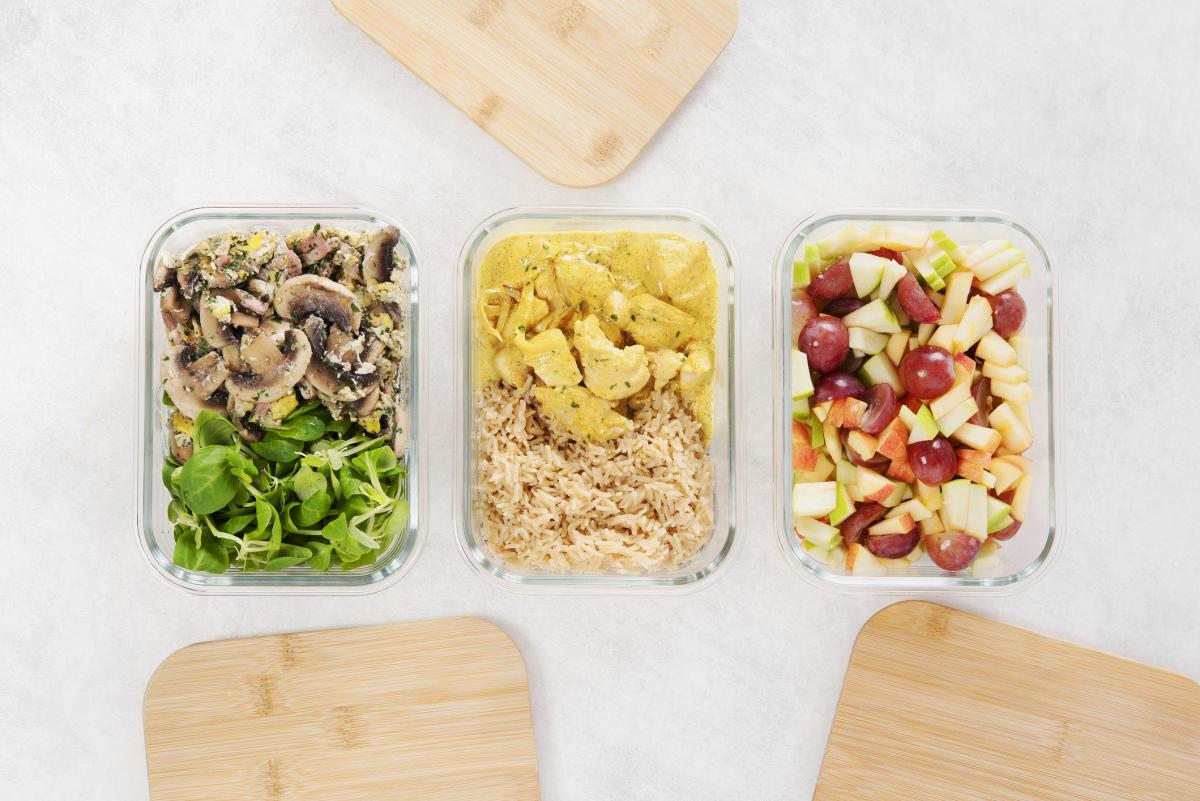Ready, set, meal prep!

Meal prep is now a full-fledged food craze, promising easy and delicious meals throughout the week for a small investment of your time. It all sounds great, but what is the catch and why aren’t we all expert meal preppers? The answer is that meal prep plans make you cook and buy the foods the author likes instead of the consumer.
Meal prep, or planning and cooking ahead, can save you time, money and nutritional setbacks that come along with impulse eating. Here are a few free guidelines from your food-loving dietitian, to get you started on a sustainable path to weekly meal prep.
1. “A goal, without a plan, is just a wish” – Antoine de Saint-Exupery. This quote sums up rule one of meal prep. Set a date, include time to shop, wash, prep and cook. Typically, this will take about four hours for new and novice cooks, and about two hours once you are more experienced.
2. What to buy: plan a variety of all the basic food groups and combine them however you like! For lunch and dinner, use the MyPlate method of meal planning, where half the plate is fruits and vegetables and the other half is split with starch and protein. Plan for snacks and side dishes – dairy foods like cheese, yogurt and milk make easy nutrition snacks.
3. Vegetables first. Salad greens, fresh mushrooms and broccoli for example, don’t always last the week, so plan to buy enough for the first few meals, and add in some frozen or hardier vegetables like carrots, peppers, onions and potatoes. Steam-in-the-bag vegetables in your freezer aisle are nutritious, cheap and take about three minutes to cook on a busy night. Have some seasonings on hand to dress up the vegetable – try a new salad dressing, garlic infused olive oil, hummus dip or a squeeze of fresh lemon or lime to transform produce into plate-worthy side dishes.
4. Plan the protein. This can include fish, seafood, chicken, pork, lean beef – like sirloin, eggs and cheese. Most fresh meats keep for two to three days. Once cooked, protein leftovers will keep for up to three more days. Rule of thumb, cook off your fish, seafood and ground meats the first day or two, fresh meats by day three. Freeze what you won't eat right away.
5. Cook once, eat twice (or thrice!). This rule applies to proteins, vegetables and grains. Some examples: if you grill chicken breasts for fajitas, make extra for a Caesar salad the following night. When making ground beef for tacos, double the recipe and reserve half for chili as well. One roast chicken can make up to four different meals if you plan for it – just search the Internet for “ways to use roast chicken” and let your imagination take over! Caramelized onions and peppers can top turkey burgers night one, fajitas night two and a vegetable omelet anytime. Steam rice to pair with your grilled shrimp tonight and save a cup to make chicken and rice soup with your leftover chicken and vegetables.
6. Plan easy whole grains. Whole grain garlic toast, corn on the cob and quinoa are all family friendly. For super fast sides, try whole wheat couscous which takes about five minutes to make. In the freezer section next to vegetables, find steam-in-the-bag brown rice, wild rice and even whole grain mac and cheese!
7. Finish with fruit. In fall, apples, pears and grapes are in season and perfect just as they are. During winter, try orange wedges, late harvest apples or frozen peaches to bring back some sunshine.
8. Time to make your list – write down three versatile protein foods, three whole grain sides, three fruits, two to four fresh vegetables, one to two frozen vegetables and dairy choices for breakfast, snacks, and cooking. What combos can you imagine? Write them down, and get ready, set, meal prep!




